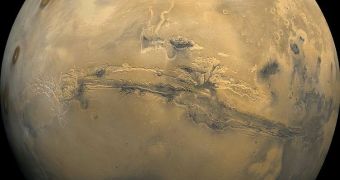Experts from Arizona and Pennsylvania propose that the Moon and Mars may represent excellent places to start searching for alien artifacts. These objects may have been left behind by space probes or other spacecraft that may have visited our solar system a long time ago.
Both these celestial bodies have surfaces that could easily preserve any type of wrecked spacecraft for millions of years, without damage. As such, searching for such remnants could prove to be the best possible way to go about trying to find evidence of alien life.
This avenue of research could also benefit experts with the Search for Extraterrestrial Intelligence (SETI) Institute, in California. Traditionally, the organization has been focused on scanning the sky for radio beams transmitted from obviously-artificial sources.
Even those involved with the search know that it's a long shot, and apparent waste of resources. However, if SETI were successful, then the implications of this would be massive. A shift in the paradigm it is currently operating under could increase its chances of actually finding something.
Physicists Paul Davies and Robert Wagner, both at the Arizona State University (ASU), and colleagues at the Pennsylvania State University (Penn State) propose searching the Moon and Mars, respectively, for physical signs of alien presence.
The assumption is that any extraterrestrial race capable of spaceflight would have surely sent probes throughout the galaxy. One of them may have crashed on the Moon, or Mars. If that is true, then the wrecks should still be there.
Atmospheric conditions on both these celestial bodies are extremely well-suited for preserving things for prolonged periods of time. The problem now is how to find any such potential signs. We would literally have to comb every square foot of both the Mars and the Moon to find anything.
Things are simpler when it comes to the Moon, since the NASA Lunar Reconnaissance Orbiter (LRO) spacecraft is capable of snapping images at a resolution level of about 0.5 meters per pixel. This provides an exquisite opportunity for researchers to look for anything out of the ordinary.
In excess of 340,000 LRO images have already been made available to the general public. “From these numbers, it is obvious that a manual search by a small team is hopeless,” the ASU researchers explain, quoted by Daily Galaxy.
“Extraterrestrial artifacts may exist in the solar system without our knowledge simply because we have not yet searched sufficiently. Few if any of the attempts would be capable of detecting a 1 to 10 meter (3 to 33 foot) probe,” scientists Jacob Haqq-Misra and Ravi Kumar Kopparapu explain.

 14 DAY TRIAL //
14 DAY TRIAL //